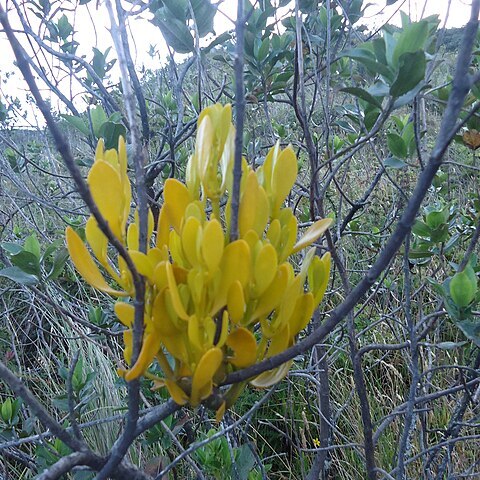Woody vines, hemiparasitic, often on branches of other trees, evergreen. Stems terete, ridged when young. Leaves alternate, petiolate or sessile, leathery, palmately 3-9(-11)-veined, lateral veins arched above base, margin entire. Inflorescences axillary, 1-flowered, fasciculate, cymose, or umbellate; bracteoles 3-8 subtendting each flower. Perianth lobes 5 or 6, distinct from disk, interior with a tuft of hair or tongue-shaped appendage behind each stamen. Flowers bisexual or unisexual (plants monoecious or dioecious). Male flowers: stamens as many as perianth lobes, nearly on the base of lobes; filaments short; anthers small, introrse, cells divaricate, dehiscence oblique. Disk superior. Female flowers: slightly larger than male, solitary or in fascicles, usually sessile, perianth tube adnate to ovary, lobes similar to those of males, staminodes usually present, discs covering ovary. Ovary inferior; ovules 3, pendulous from apex of placenta. Style almost absent; stigmas lobed or capitate. Fruit a drupe, with ± persistent perianth lobes at apex, lost only in fully mature fruits, endocarp rigid, rugose or tuberculate abaxially, larger tubercles usually forming 8-10 longitudinal lines, adaxially embedded in seed. Seeds longitudinally furrowed, 8-10 aristate rays on transverse section; embryo straight, short; cotyledons minute.
More
Climbers or (not in Australia) shrubs. Leaves alternate, well-developed. Flowers unisexual or (not in Australia) sometimes bisexual, solitary or in axillary racemes or umbels, bracteate. Tepals 5. Stamens 5. Ovary inferior with several to many incomplete septa; style short or absent; stigmas 5. Fruit a drupe with succulent mesocarp. Seeds several, lobed.

